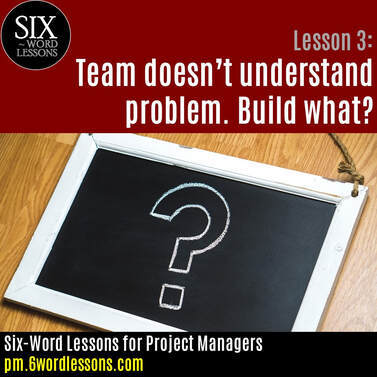“I’m not on Board!” Embracing Your Team’s Think-Do Cycle
 My wife Patty and I purchased a townhome back in 2009. It is in a beautiful area, walking distance to the types of things we like to do. Built in the 1970s, it was badly in need of major renovation. I saw the potential and after one visit was ready to put in an offer. Patty needed to go back a couple more times to look at the townhome, the property grounds, and the neighborhood. She needed more time to think through and absorb what we were considering before moving forward. We made an offer four days after seeing the townhome, when we were both comfortable with the purchase. Then we proceeded with gutting and remodeling, then moved in June 2011. We never regretted the decision.
My wife Patty and I purchased a townhome back in 2009. It is in a beautiful area, walking distance to the types of things we like to do. Built in the 1970s, it was badly in need of major renovation. I saw the potential and after one visit was ready to put in an offer. Patty needed to go back a couple more times to look at the townhome, the property grounds, and the neighborhood. She needed more time to think through and absorb what we were considering before moving forward. We made an offer four days after seeing the townhome, when we were both comfortable with the purchase. Then we proceeded with gutting and remodeling, then moved in June 2011. We never regretted the decision.Our home purchase example was the first time I consciously thought about how quickly I made decisions and moved forward with implementation relative to Patty’s more deliberate approach. At first, I was frustrated with our speed differences, wondering why she couldn’t move as fast as me. As we’ve continued to grow, I’ve learned to respect and appreciate her more thoughtful and deliberate pace as she raises issues that I might not consider. We now recognize each other’s processing speed, or what I call “think-do cycle,” and how our different styles yield a decision-making speed we’re both content with.
The think-do cycle applies to work teams as well. You may have some on your team who are ready to launch on a proposed solution when others need time to process. When differing think-do cycles aren’t acknowledged and embraced, work teams could get frustrated with moving either too fast or too slow. When differences are embraced, decisions and resulting action are made with better team buy-in. As the leader, your job is to balance team-buy-in with the timeliness that a decision must be made. It’s not easy to do; but it’s something that leaders continually need to balance to minimize execution friction. Need better awareness of the think-do cycle and how to implement in your team? Give these five tips a look:
Understand your own think-do cycle speed – Are you someone who typically makes decisions, then immediately embarks on implementation, or do you need more “soak time” to digest the change? Getting real with yourself on your cycle speed will help you better understand the cycle speed of others.
Acknowledge other’s cycle speed – Knowing the think-do cycle speed of team members, stakeholders and others you interact with helps reduce frustration with those whose speed differs from your own. There’s no harm in identifying cycle speeds. Use terms that don’t imply one speed is better than the other, such as “deliberate” or “quick.”Articulate the strengths and weaknesses of each cycle relative to each job function – Someone with a deliberate think-do cycle most likely wouldn’t do well in a position where split-second decisions are needed; conversely, someone with a quick think-do cycle might struggle in a position where consensus-building among a diverse group of stakeholders is required.Keep a balance of both types – The best organizations I’ve seen have a balance of quick and deliberate think-do cycle team members. Teams with a blend of think-do cycles yield a better overall solution than teams made up of people with only one type of cycle.Embrace your counterbalance – You can recognize your and other people’s cycle speeds, but if you don’t embrace the styles different from your own, you’ll just create frustration with your team. Make sure you listen to those with different styles and adjust your own speed when it makes sense.
Be mindful about the think-do cycles of you and your team. You’ll better secure team buy-in on key decisions and reduce execution friction.
Published on July 27, 2019 02:55
No comments have been added yet.



